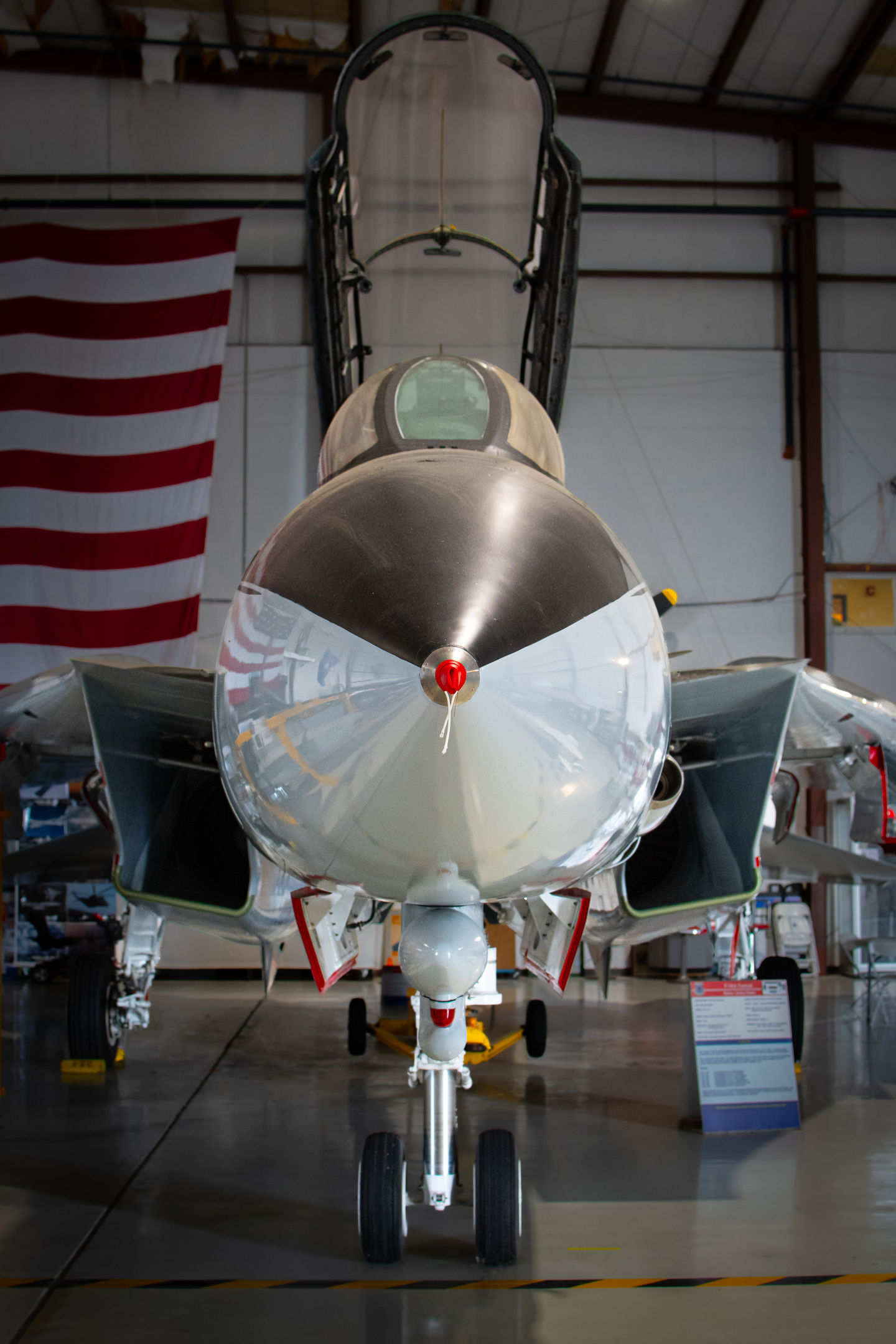Create Your First Project
Start adding your projects to your portfolio. Click on "Manage Projects" to get started
F-14A Tomcat
First Flight
21 December 1970
Location
Main Display Hangar
Dimensions & Capacity
Crew: 2 (Pilot, Radar Intercept Officer (RIO)
Length: 62 ft 9 in (19.13 m)
Wingspan (Un-swept): 64 ft 1.5 in (19.545 m)
Wingspan (Swept): 38 ft 2.5 in (11.646 m)
Height: 16 ft (4.9 m)
Empty Weight: 43,735 lb (19,838 kg)
Max Take Off Weight: 74,350 lb (33,725 kg)
Performance
Speed: Maximum Mach 2.34, Cruise – Mach 0.72 (572 MPH)
Service Ceiling: 53, 000 ft (16,000 m)
Range: 1,600 nautical miles (3,000 km)
Airworthiness
Static Aircraft
Armament
Guns:
1x M61A1 Vulcan
Hardpoints:
10, 14,500 lb capacity
Rockets:
7x LAU-10 pods
Other:
TARPS, LANTIRN LTS, ADM-141 TALD, 2x drop tanks
Missiles:
AIM-54, AIM-7, AIM-9
Load Configs:
Various (e.g., 2x AIM-9 + 6x AIM-54)
Bombs:
JDAM, Paveway, Mk 80, Mk 20 Rockeye II
Loan Status
This aircraft on loan from the National Naval Aviation Museum on behalf of the Navy History and Heritage Command
Serial Number
161134
The Grumman F-14 Tomcat is an American supersonic, twin-engine, two-seat, twin-tail, variable-sweep wing fighter aircraft. The Tomcat was developed for the United States Navy’s Naval Fighter Experimental (VFX) program after the collapse of the F-111B project. The F-14 was the first of the American Teen Series fighters, which were designed to incorporate air combat experience against MiG fighters during the Vietnam War. The F-14 first flew on 21 December 1970 and made its first deployment in 1974 with the U.S. Navy aboard USS Enterprise (CVN-65), replacing the McDonnell Douglas F-4 Phantom II. The F-14 served as the U.S. Navy’s primary maritime air superiority fighter, fleet defense interceptor, and tactical aerial reconnaissance platform into the 2000s. The Low Altitude Navigation and Targeting Infrared for Night (LANTIRN) pod system was added in the 1990s and the Tomcat began performing precision ground-attack missions. The Tomcat was retired by U.S. Navy on 22 September 2006, having been replaced by the Boeing Hornet family of aircraft.












